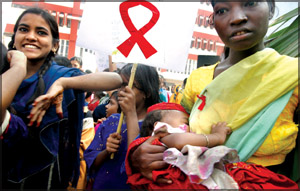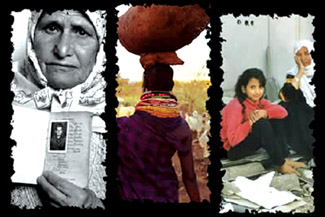|

Natural Sciences Unit at Colombo Museum
The National Gem and Jewellery Authority is planning to set up a
separate National Natural Sciences Unit at the
|

Colombo National Museum |
Colombo National Museum. The National Museums Department has
agreed to release 1,200 square feet from the Colombo Museum for this
purpose.
Minerals of antique value in the possession of the National Museum,
which are currently deposited in the Bank of Ceylon, would be shifted to
this unit once it is completed.
The National Gem and Jewellery Authority would also invite donations
of gems and minerals, documents and goods related to the gem industry
(of antique value) to be securely deposited in this unit.
An action committee comprising representatives of the National
Museum, Archaeological Department, Moratuwa University Geology and
Mining Department, National Gem and Jewellery Authority, National Gem
and Jewellery Research Institute and gem and jewellery industry unions
would be appointed to handle this project.
Tenders for the construction of the unit will be called soon and work
is expected to start by mid-January next year.
Controlling vehicle emissions
Vehicles emitting excessive levels of smoke are a major health and
environmental hazard as we all know. Moves have been made in the past too to control such emissions and the latest
such measure to be taken is the non-issuance of revenue licences to
vehicles emitting excessive smoke.
have been made in the past too to control such emissions and the latest
such measure to be taken is the non-issuance of revenue licences to
vehicles emitting excessive smoke.
The Transport Ministry has prepared new legislation which will ensure
that revenue licences are not issued to such vehicles which can have
harmful effectcs on the environment. Under the proposed legislation,
smoke tests will be made compulsory for vehicles.
People applying for vehicle revenue licences will have to produce
this smoke emission report along with their licences to obtain a new
revenue licence. The Commissioner of Motor Traffic has been vested with
powers to set up smoke testing centres for vehicles.
Taking leadership in fighting AIDS
AIDS...this four-letter word sends shivers up the spines of most
people and brings fear into the hearts of most. Why? It's one of the most dreaded diseases of the modern world,
affecting over 40 million of the global population.
most. Why? It's one of the most dreaded diseases of the modern world,
affecting over 40 million of the global population.
It hasn't spared children either. According to UNAIDS estimates, of
the over 39.5 million people currently living with HIV, 2.3 million are
children.
Another sad fact is that around half of all people who become
infected with HIV do so before they are 25 and die from AIDS before they
are 35. Last year alone, about 4.3 million people became infected with
HIV which leads to this incurable disease.
Although AIDS affects men, women and children from all parts of the
world, around 95 per cent of the victims are from developing nations
like ours. It is to drive home the seriousness of this issue that World
AIDS Day is held on December 1 every year.
The event was held for the first time in 1988, and is not just about
raising money for research, but also about increasing awareness,
fighting prejudice and improving education.
World AIDS Day was originally organised by UNAIDS, but from 2005, the
responsibility of organising it had been handed over to an independent
organisation known as The World AIDS Campaign.
The slogan for the event is 'Stop AIDS: Keep the Promise'. This is an
appeal to governments, policy makers and regional health authorities to
ensure that they meet the many targets that have been set in the fight
against HIV and AIDS, and especially the promise of universal access to
HIV treatment, care, support and prevention services by 2010.
This campaign will run until 2010, with a related theme chosen for
World AIDS Day each year. The theme for this year is 'Leadership' and
highlights the need for innovation, vision and perseverance in the face
of the AIDS challenge.
The campaign calls on all sectors of society to take the initiative
and provide leadership on AIDS. Another campaign that is running in
concurrence with the main event is 'Stop AIDS in Children' which calls
for urgent action in the prevention of mother-to-child transmission.
Due to the lack of necessary drugs for AIDS infected mothers, half a
million children become infected with HIV every year. This campaign
calls on governments and international agencies to urgently improve the
coverage of treatments worldwide.
Over 380,000 children die of AIDS every year and if nothing is done,
more than one million children will fall victim to this disease by 2010.
Most people especially in foreign countries wear a red ribbon on and
around this day. The red ribbon is an international symbol of AIDS
awareness and is worn to demonstrate care and concern about HIV and
AIDS, and to remind others of the need for their support and commitment.
Stop violence against women
Violence is one of the biggest threats to society today and has grown
in leaps and bounds due to the many wars taking place around the world. Although all human beings are
equally prone to become victims of violence, this is especially so in
the case of women.
wars taking place around the world. Although all human beings are
equally prone to become victims of violence, this is especially so in
the case of women.
Women face violence on a daily basis and violence against women is a
problem that knows no national, cultural, class, caste or religious
boundaries. Violence against women is carried out by men, women as well
as states. It comes to the fore during armed conflicts, but takes place
just as well inside homes.
The right to be free from violence has been recognised as a human
right in several international human rights conventions and treaties.
However, violence continues to be a reality for most women.
It is to address and highlight this problem that November 25 has been
set apart as the International Day for Elimination of Violence Against
Women. On this Day, women renew their commitment to fight for their
lives to be free from violence and call for a violence-free world.
They commemorate the women who have fought against the violation of
women's human rights, celebrate the survivors of violence against women
and remember those who fell victim to it. Events connected with the Day
are organised by the United Nations Development Fund for Women.
The resolution declaring November 25 as the International Day for the
Elimination of Violence against Women was adopted by the United Nations
General Assembly in December 1999.
The origin of this date goes back to 1960, when the three Mirabal
sisters from the Dominican Republic were violently killed for their
political activism. The sisters, known as the 'Unforgettable
Butterflies', became a symbol of the crisis of violence against women in
Latin America.
November 25 was chosen to commemorate their lives and promote global
recognition of gender violence, and has been observed in Latin America
since the 1980s.
Infotainment website for children
www.myhorlicks.com, a fun and informative website for children and
mothers, was officially launched on November 6 by Horlicks, a product of
GlaxoSmithKline Sri Lanka with the objective of improving the health and
well-being of children in Sri Lanka.
The website is especially for children aged 6-16 and mothers,
providing a platform for Horlicks to now communicate directly with
children and even mothers about their kids' requirements. It is
user-friendly and has easy navigation options and uploads quickly even
on a dial-up connection.
The website contains many games and useful information such as exam
planners, exam tips and school timetable forms. It also contains a
collection of information for mothers such as nutritional tips and how
to help children with their homework, how to help them overcome their
worries and how to communicate with them. |
